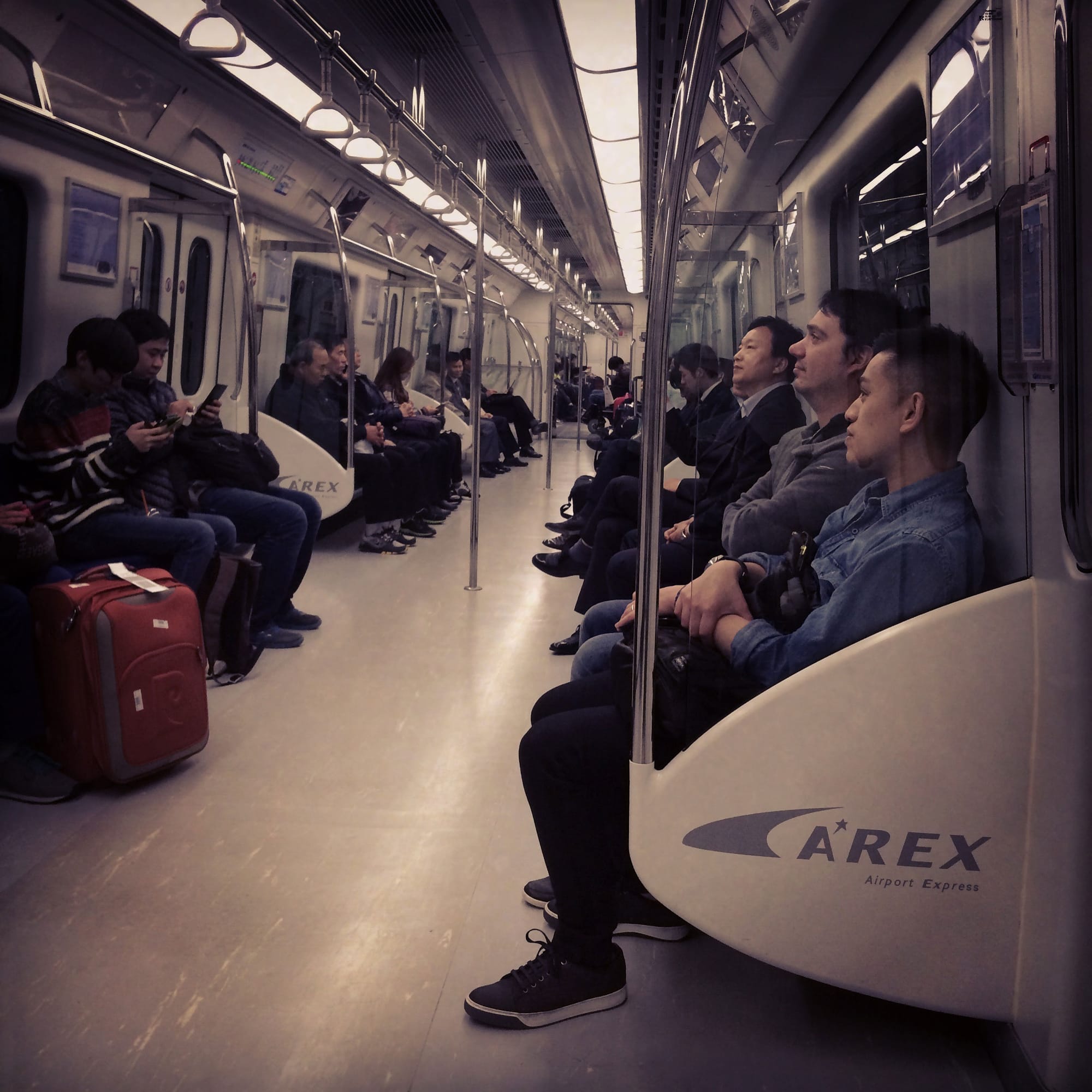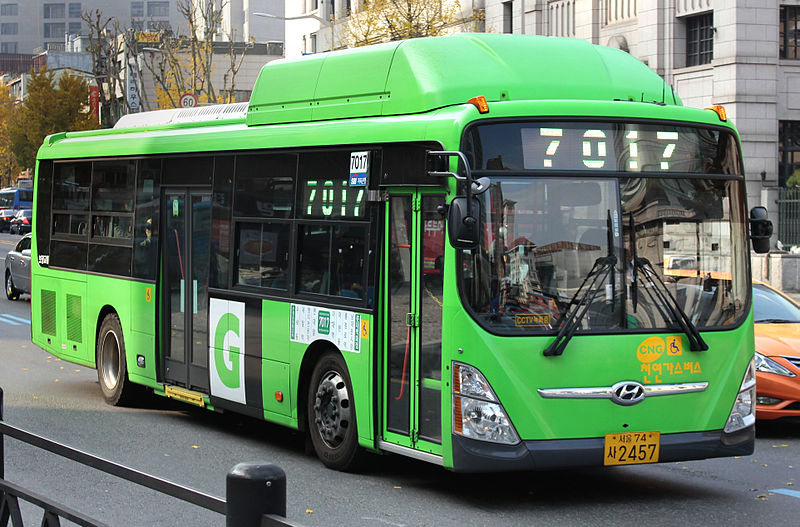The public transportation system in Seoul is mostly accessible to wheelchair users. The system will present some challenges to the disabled, but tips from my experience using the system with a powered wheelchair should help you better navigate the city.
AREX Airport Express

The Airport Express train operates between Seoul-Incheon International Airport (ICN) and Seoul Station, which is the city’s downtown transit hub. The train also stops at Gimpo International Airport (GMP), which is the smaller of the city’s airports.
AREX is fully wheelchair accessible. Trains offer easy roll-on/roll-off ability for wheelchair users. The gap between station platform and train is minimal. Dedicated wheelchair spaces are available at both ends of each train car, in addition to priority seating for the disabled and elderly. Trains provide stop information on overhead LCD screens. All stations on the Airport Express are equipped with elevators for wheelchair access.
The AREX serves 11 total stations, with terminuses at Seoul Station and ICN airport. The distance between Incheon airport and Seoul Station is 58 kilometers. The journey between these stations takes approximately 45 minutes. Gimpo Airport is 11 kilometers from Seoul Station and is a stop along the route.
AREX stops offer different connections to the subway lines that serve the city and tourist areas. Seoul Station provides connections only to subway lines 1 and 5. For more information on AREX stops and subway connections, consult the system map.
Seoul Metropolitan Subway
The subway system in Seoul has been rated the world’s best by CNN and Jalopnik. In the world’s most wired city, subway cars have access to mobile 4G, LTE and Wi-Fi signals throughout the network. Trains and stations are outfitted with advanced visual displays that provide subway maps, times and connection information.
The subway is wheelchair accessible at all stations. Elevators are available at the majority of stations. There will often be two or more elevators at each station — One between the street and ticketing levels and another between the ticketing and platform levels. At the street level, there are no signs to indicate elevator locations, but they are each located inside of a large glass box which is easy to recognize. Street level elevators are all located within the vicinity of the marked stair/escalator entrances to a given station. Inside the stations, signs direct passengers to the nearest elevator.
Stations without elevators have been made wheelchair accessible by mechanical lifts that move up and down stairways. These lifts can transport a person seated in either a manual or powered wheelchair.
Like the Airport Express, subway trains provide easy roll-on/roll-off access to wheelchair users and strollers. The gap between subway platform and train is small and can be easily crossed by wheelchairs and scooters.
The system contains 622 stations across 18 lines.
City Bus

Seoul is served by an extensive city bus network. There are four primary bus line types, each represented by a different color. Each line type has multiple bus routes operating in and serving different parts of the city.
- Trunk Bus (Blue) — High speed express bus routes with service between suburban areas and downtown Seoul.
- Branch Bus (Green) — Flexibly operated to connect major subway stations and bus terminals outside downtown.
- Rapid Bus (Red) — Express bus services connecting downtown Seoul with the metropolitan area.
- Circulation Bus (Yellow) — Routes in the downtown districts which connect bus and subway stations with business, shopping and tourist destinations.
The Seoul Metropolitan Government claims that one-third of city buses are wheelchair accessible with lowered floors, wheelchair ramps and securement areas with straps/tie downs. The city’s stated goal is to make more than 50% of buses accessible by 2015, with full accessibility by 2020.
Fares, route maps and schedules
Fares can be paid using the T-money reloadable card across the entire public transportation system in Seoul. The T-money card helps to facilitate transfers between subway and bus services. T-Money cards can be purchased at convenience stores in the airport and inside/around subway stations. Single journey tickets are also available for purchase via the automated ticketing machines at each subway station.
Subway fares are based upon total distance traveled, including transfers between subway lines. The basic fare, including distances up to 10 km is 1,050 KRW. For distances of 10 km to 40 km fares are an additional 100 KRW per 5 km. For distances greater than 40 km, an additional 100 KRW per 10 km will be charged. An example for a 55 kilometer journey:
Base fare (first 10 km) — 1,050 KRW
Add kilometers 10-40 (100 KRW per 5 km) — 600 KRW
Add kilometers 40-55 (100 KRW per 10 km) — 200 KRW
Total — 1,850 KRW
Fares are charged based upon the shortest distance between two points, regardless of the routing the passenger chose. Additional information on routes, schedules and riding Seoul’s public transit with a disability is available below:
- For an overview of “How to Ride the Subway,” visit www.smrt.co.kr>.
- For a printable pamphlet on using the public transportation system, visit www.smrt.co.kr.
- For directions and to plot the shortest journey, visit www.smrt.co.kr.
- For a time table of schedule subway train services, visit www.smrt.co.kr.
- For a list of accessible city bus routes, visit www.disability.seoul.go.kr.
- For more information on accessible public transit from the city government, see www.visitseoul.net.
Due to the rapidly changing nature of accessibility of the world’s public transit systems, please use the comments section at the bottom of this page to share your experiences and any changes you may have noticed in Seoul.
